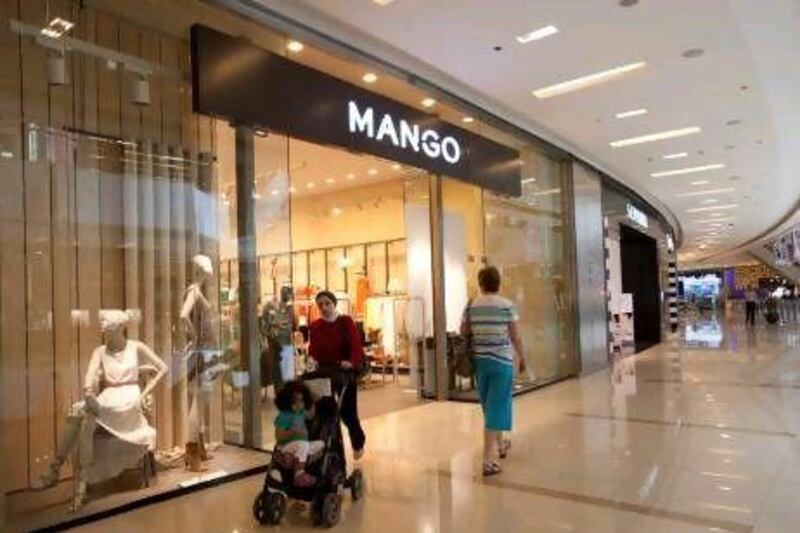Riham Osama buys most of her glad rags online from international websites and has them delivered to her door.
That way, the Dubai resident from Egypt says she saves herself hundreds of dirhams avoiding what she believes are overpriced fashion brands in the UAE.
"I bought stuff online and got them delivered and the difference was at least 30 per cent," she said. "When compared to a country like Egypt, where customs and taxes are higher, the UAE is much cheaper, but compared to Europe and the US, definitely not."
Given the tax-free environment and relatively low labour costs in the UAE, shoppers could be forgiven for thinking the price of fashion would be lower here than in other parts of the world.
In fact prices are as much as 25 per cent higher for brands such as H&M and Zara, according to an analysis by The National and Caxton FX, a currency exchange company based in London.
A patterned men's shirt, at Dh129 (US$35), is more than 10 per cent higher in the UAE than in the United Kingdom, Italy and Ireland, according to the analysis. A patchwork clutch handbag at Zara is as much as 20 per cent higher in the Emirates than elsewhere, and a men's denim shirt is 10 per cent more.
Only clothing in Switzerland was consistently more expensive than in the UAE, the analysis found.
Of three brands surveyed - Mango, H&M and Zara - Mango was similar in price or cheaper here than in other countries.
Analysts are divided as to why there are such discrepancies in pricing among global brands, and they say a number of factors contribute to the cost of a garment.
"It could be the fact that retail franchises have control to a degree over the pricing," says Matthew Green, the head of research at the property specialist CBRE and an expert on retail rents.
"It's currently pretty common to pay more for clothing items here. Retailers do not give much direction of exactly why," he adds. "It's probably down to the franchising and comparative costs."
Many retailers in the Middle East work under a franchise structure under which they pay annual fees to the international brand names. Such fees can often depend on sales performance.
Some local franchise retailers have control over their prices, but others, such as Zara, are dictated by head-office policy.
"All these aspects mentioned have an influence in the price in each market: real estate, labour costs, customs, logistics and transportation, [as well as] purchasing capacity and competitors pricing," says a spokesman for Zara.
"All of them intervene, none of them is remarkable. For us, the most important point is to keep our commercial formula of quality products with latest fashion trends at affordable prices."
When it comes to costs, retailers in the UAE pay lower rents and labour costs than their peers elsewhere. New York, for instance, has the highest retail rents in the world, followed by Hong Kong, Sydney, London and Zurich.
But Dubai does not even make the list of the top 20, according to a survey last year by CBRE.
Throughout much of the rest of the world, taxes are also added to purchases such as clothing, which should increase the price outside the UAE.
"The dynamics of the business here and the western world are very different," says Vipen Sethi, the chief executive of Landmark Group, one of the region's biggest retailers. "Each company has different strategies on pricing and I think that's what determines the price of a garment here and elsewhere in the world."
Landmark has a big collection of its own home-grown brands, such as Splash, Max, Emax and Home Centre, as well as international franchises with Reiss, New Look, Lipsy and Koton.
Ishwar Chugani, the executive director in the Middle East for Giordano, which has more than 1,000 stores worldwide, says there should be a maximum difference of 10 per cent between countries.
"Pricing is very subjective. It cannot be for every item you apply the same formula," he says. "You need to see your market and competitors. People should not get greedy and think that there's higher spend here so you can take advantage of it."





